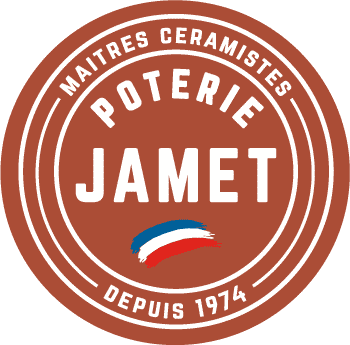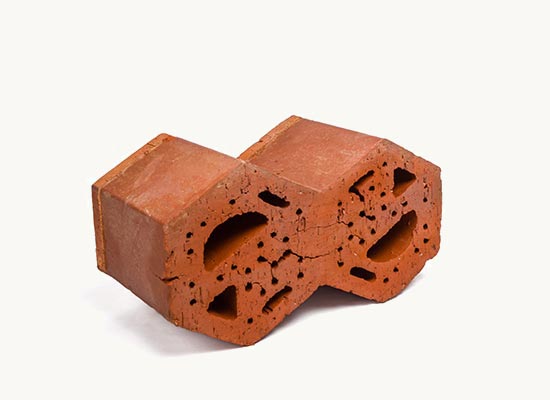

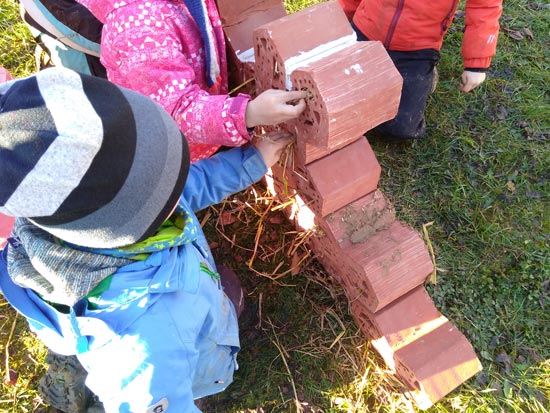
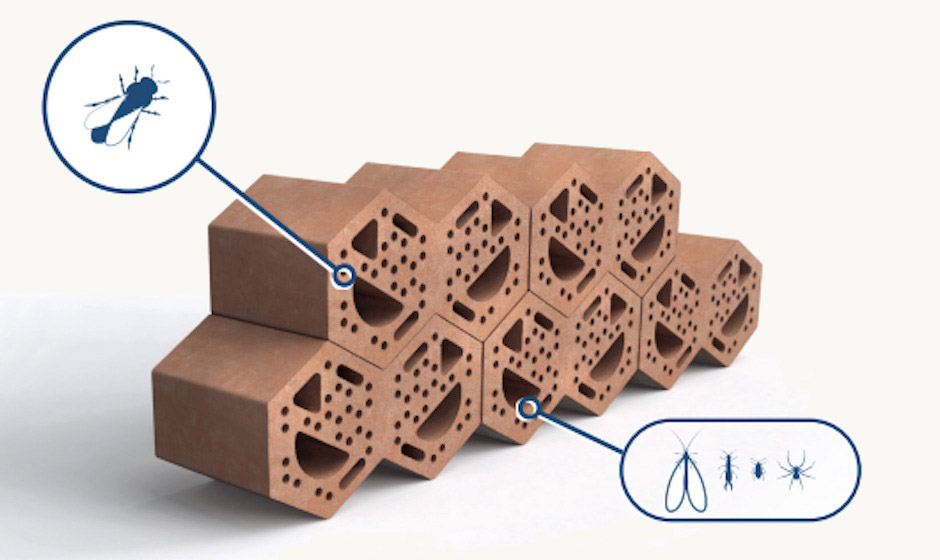
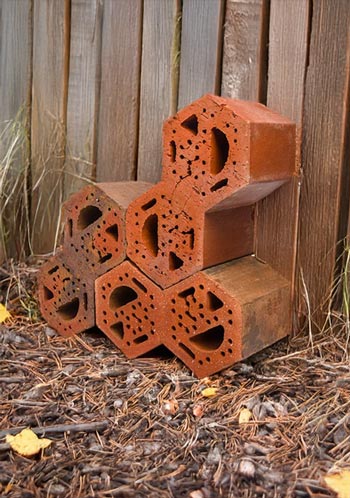
Insect hotel - LOGE®
- Ceramic insect hotel, durable material
- Design by a team of naturalists who guarantee the quality of your biodiversity management actions
- Aesthetic design, thought for landscape designs
- Ingenious design to allow for layering and adding teaching aids
The ceramic insect hotel
LOGE is a somewhat unusual brick with holes: its holes are specifically designed to shelter certain types of insects, starting with wild bees.
The other reservations are intended to be filled with materials such as straw or dead leaves, again to attract insects such as lacewings, forficulae, Anthocoris or even arachnids.
The double hexagon shape was chosen both for aesthetic reasons which make sense with the subject of pollinators, but also and above all because it allows the stacking of several LOGE .
This type of stacking also makes it easy to make reservations in order to integrate educational and explanatory materials but also to create real landscaping, facing south-east.
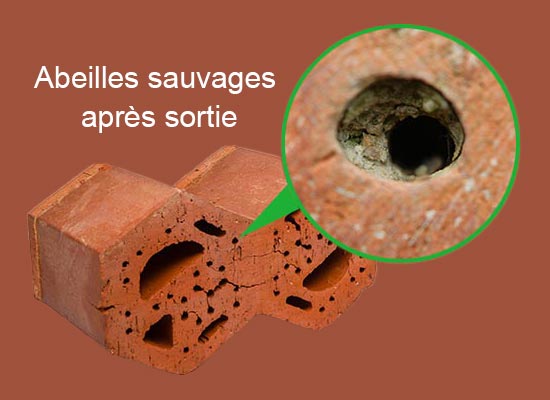
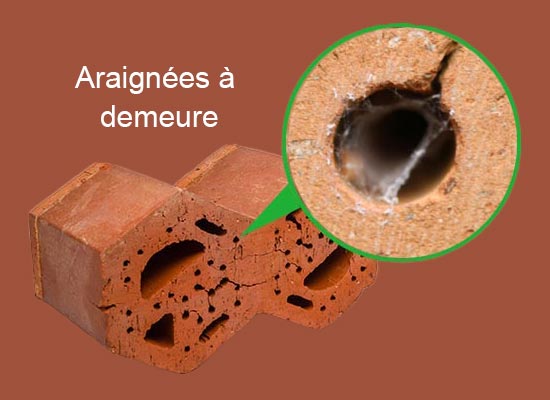
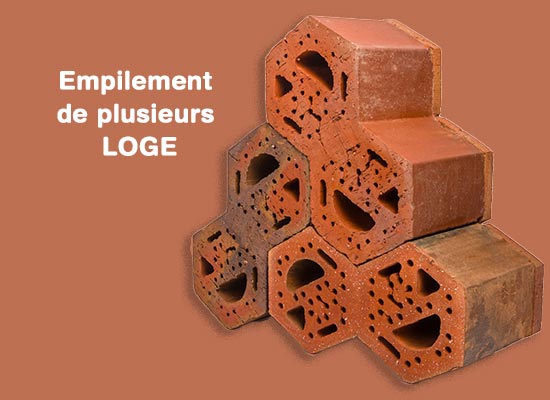
LOGE has no other claim than to be an additional brick in a landscape that really needs tools, particularly educational ones, to help biodiversity gain a foothold in the daily lives of city people.
Julien HOFFMANN - Founder, Défi-ecologique
LOGE is a response to all these lonely, poorly thought-out or even counterproductive “insect hotels” (poor upholstery, uncapped at the back, etc.), often manufactured far away with inadequate materials (glued laminated wood, stained, painted, etc.) and very rarely stands the test of time.
Seeing insect hotels popping up everywhere was good news for biodiversity, but now seeing them rot and decay by the thousands is a real waste.
The choice of terracotta quickly became evident both for its durability qualities but also because this material allows particularly interesting heat inertia with regard to the entomological objectives of the device.
LOGE will serve us all... Inviting insects, still so poorly understood and so poorly perceived, into our daily lives can only allow us to better protect them, to better accept them. The colonization of LOGE is also visually quantifiable in that the wild bees which will briefly take up residence there will seal the holes, it is the notion of seasonality of biodiversity which will be invited into the public space.
Because yes, pride of place is given to wild bees through “tunnels” designed to be the right size after cooking to attract them. These bees will come and deposit eggs and food there before closing everything to protect future offspring.
And when the wild bees are not there? Well, the spiders will seize this opportunity!
The half-moons are intended to be stuffed with straw (without forcing too much to leave colonizable spaces) to make room for Chrysopidae and Forficulae while the triangles will more readily accommodate dead leaves in the same proportions to create a cozy nest for Anthocoris (and others).
Larvae in the tubes
When an osmia (one of the most widespread wild bees) passes near LOGE, it quickly realizes that it is a good place to come and settle its larvae. She therefore begins by doing a little cleaning inside the cavity she has chosen.
She will then create a small earthen house in which she will place an egg as well as a ball of food prepared by her and which consists of a mixture of nectar and pollen. Once the operation is completed, it finishes sealing this compartment and starts again with the next one so as to fill all the tube at its disposal.
Finally, the rectangles will be left deliberately empty for all the insects which may use them to spend the winter sheltered but also for all the arachnids.
Insects have needs, which is why they are increasingly in difficulty: finding environments favorable to their reproduction is becoming more and more complicated.
The importance of orientation
The orientation of the LODGs is as important as the orientation of a nest box. The instructions are simple, but you have to respect them as much as possible to ensure the effectiveness of the system: orient the entrances to the south, south-east .
No need for too much
Every environment has its own carrying capacity. For insects, it is the available food that will play the role of regulator, but the fact of concentrating their presence can also have a negative effect, particularly in the transmission of diseases.
A LOGE “station” can therefore have up to 50 units and each unit should be spaced approximately 80 to 100 meters apart .
Use of LOGE as a mediation support
If the LOGE installation lends itself particularly well to setting up educational workshops for young audiences, a LOGE station also lends itself particularly well to educational displays at its rear.
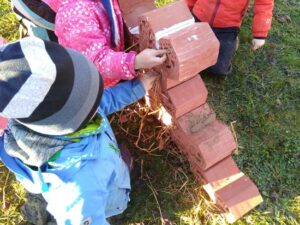
LOGE then becomes a mediation tool both occasionally and over time.
The tests in real conditions, the methods and the results of the Ollas BEE Jamet® and LOGE® have been defined, carried out and confirmed by leading professionals in their respective fields.
3 years of research and testing from 2018 to 2021:
- 1 year and a half of research and development from 2018 to 2019 by Défi Ecologique for entomofauna support, 100% in accordance with the recommendations of naturalists and other scientists of the project on a European scale
- 1 year and a half to validate the manufacturing processes in accordance with the specificities of the Ecological Challenge and the quality label of Pottery JAMET: Probus Pottery JAMET.
Partners:
- Philippe Riehling, Designer
- Julien Hoffmann, Naturalist
- Laurent Jamet, Master ceramist
